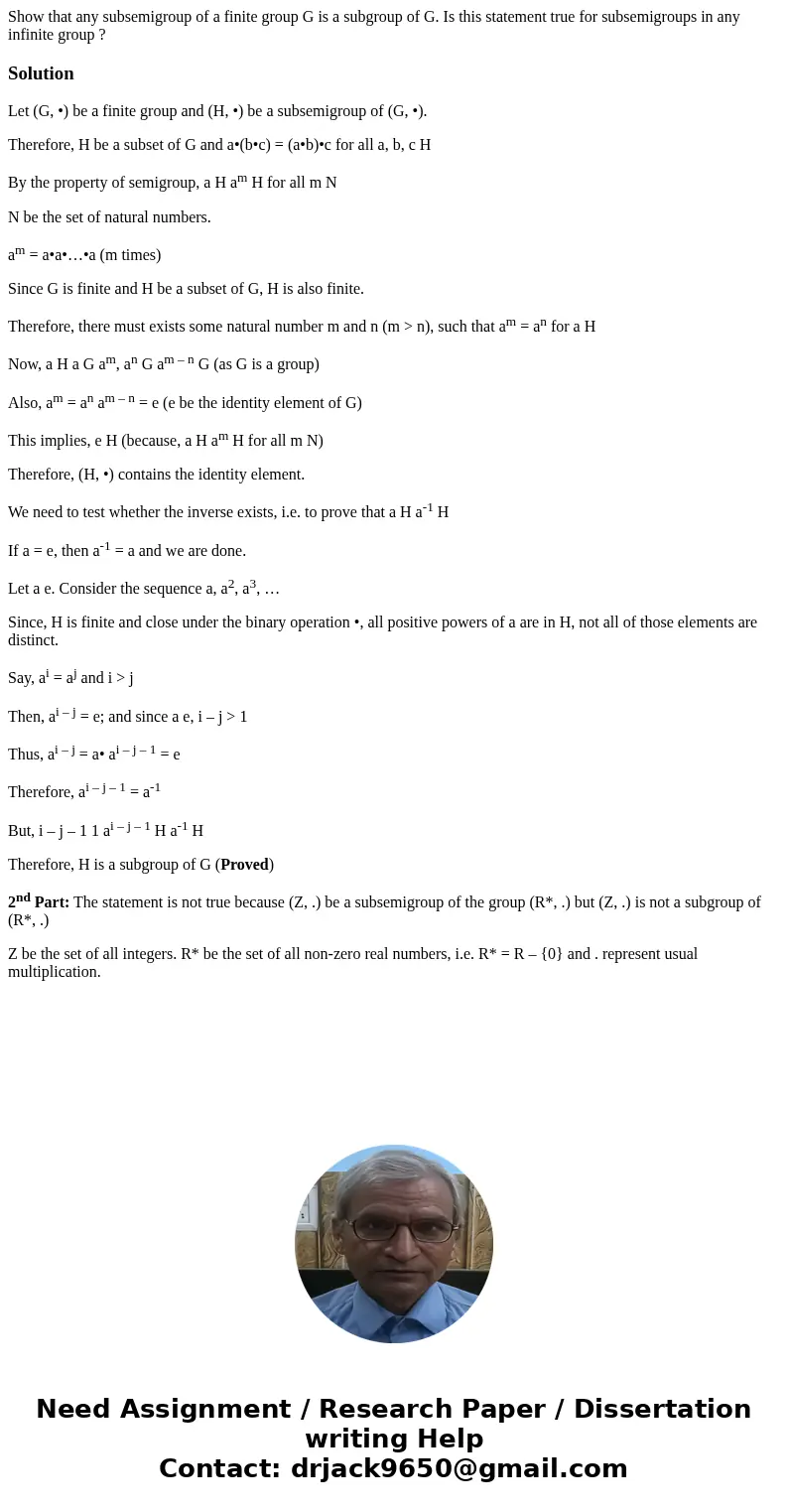Show that any subsemigroup of a finite group G is a subgroup
Solution
Let (G, •) be a finite group and (H, •) be a subsemigroup of (G, •).
Therefore, H be a subset of G and a•(b•c) = (a•b)•c for all a, b, c H
By the property of semigroup, a H am H for all m N
N be the set of natural numbers.
am = a•a•…•a (m times)
Since G is finite and H be a subset of G, H is also finite.
Therefore, there must exists some natural number m and n (m > n), such that am = an for a H
Now, a H a G am, an G am – n G (as G is a group)
Also, am = an am – n = e (e be the identity element of G)
This implies, e H (because, a H am H for all m N)
Therefore, (H, •) contains the identity element.
We need to test whether the inverse exists, i.e. to prove that a H a-1 H
If a = e, then a-1 = a and we are done.
Let a e. Consider the sequence a, a2, a3, …
Since, H is finite and close under the binary operation •, all positive powers of a are in H, not all of those elements are distinct.
Say, ai = aj and i > j
Then, ai – j = e; and since a e, i – j > 1
Thus, ai – j = a• ai – j – 1 = e
Therefore, ai – j – 1 = a-1
But, i – j – 1 1 ai – j – 1 H a-1 H
Therefore, H is a subgroup of G (Proved)
2nd Part: The statement is not true because (Z, .) be a subsemigroup of the group (R*, .) but (Z, .) is not a subgroup of (R*, .)
Z be the set of all integers. R* be the set of all non-zero real numbers, i.e. R* = R – {0} and . represent usual multiplication.

 Homework Sourse
Homework Sourse